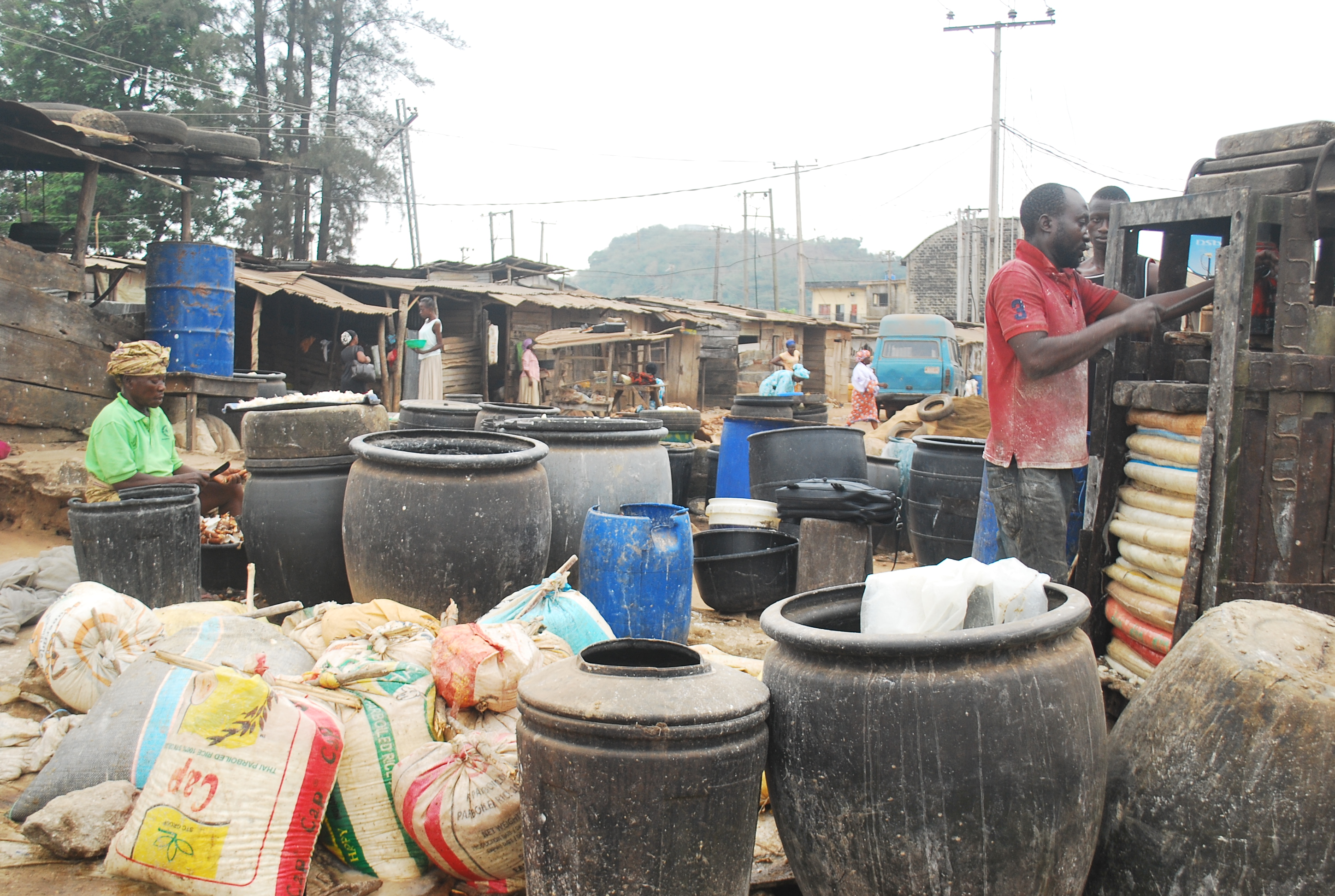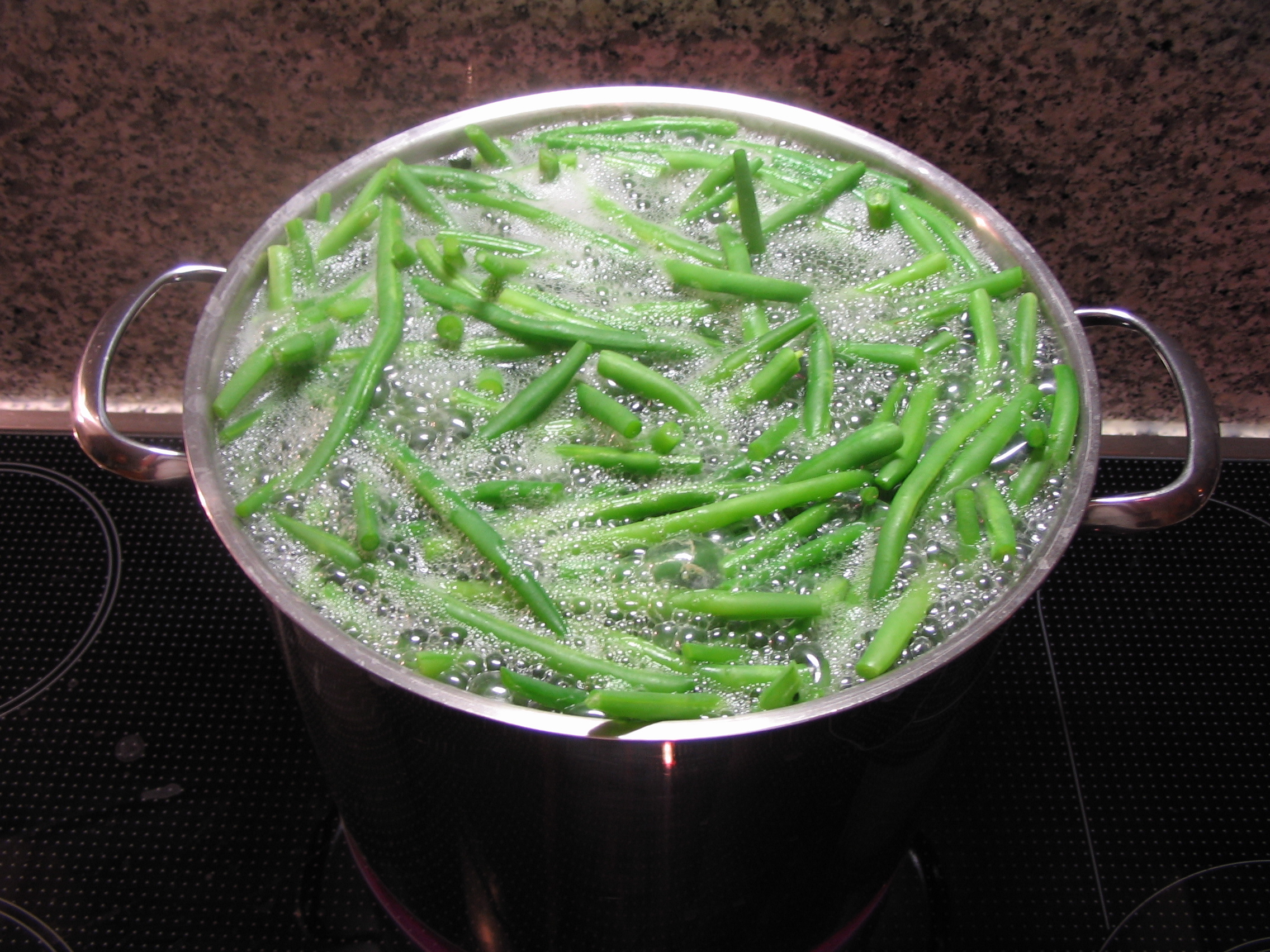|
Linamarin
Linamarin is a cyanogenic glucoside found in the leaves and roots of plants such as cassava, lima beans, and flax. It is a glucoside of acetone cyanohydrin. Upon exposure to enzymes and gut flora in the human intestine, linamarin and its methylated relative lotaustralin can decompose to the toxic chemical hydrogen cyanide; hence food uses of plants that contain significant quantities of linamarin require extensive preparation and detoxification. Ingested and absorbed linamarin is rapidly excreted in the urine and the glucoside itself does not appear to be acutely toxic. Consumption of cassava products with low levels of linamarin is widespread in the low-land tropics. Ingestion of food prepared from insufficiently processed cassava roots with high linamarin levels has been associated with dietary toxicity, particularly with the upper motor neuron disease known as konzo to the African populations in which it was first described by Trolli and later through the research network initia ... [...More Info...] [...Related Items...] OR: [Wikipedia] [Google] [Baidu] |
Lotaustralin
Lotaustralin is a cyanogenic glucoside found in small amounts in Fabaceae austral trefoil (''Lotus australis''), cassava (''Manihot esculenta''), lima bean (''Phaseolus lunatus''), roseroot (''Rhodiola rosea'') and white clover (''Trifolium repens''), among other plants. Lotaustralin is the glucoside of methyl ethyl ketone cyanohydrin and is structurally related to linamarin, the acetone cyanohydrin glucoside also found in these plants. Both lotaustralin and linamarin may be hydrolyzed by the enzyme linamarase to form glucose and a precursor to the toxic compound hydrogen cyanide Hydrogen cyanide (formerly known as prussic acid) is a chemical compound with the chemical formula, formula HCN and structural formula . It is a highly toxic and flammable liquid that boiling, boils slightly above room temperature, at . HCN is .... References {{Glycosides Cyanogenic glycosides Glucosides Plant toxins ... [...More Info...] [...Related Items...] OR: [Wikipedia] [Google] [Baidu] |
Cassava
''Manihot esculenta'', common name, commonly called cassava, manioc, or yuca (among numerous regional names), is a woody shrub of the spurge family, Euphorbiaceae, native to South America, from Brazil, Paraguay and parts of the Andes. Although a perennial plant, cassava is extensively cultivated in tropical and subtropical regions as an annual crop for its edible starchy tuberous root. Cassava is predominantly consumed in boiled form, but substantial quantities are processed to extract cassava starch, called tapioca, which is used for food, animal feed, and industrial purposes. The Brazilian , and the related ''garri'' of West Africa, is an edible coarse flour obtained by grating cassava roots, pressing moisture off the obtained grated pulp, and finally drying it (and roasting in the case of both and ''garri''). Cassava is the third-largest source of carbohydrates in food in the tropics, after rice and maize, making it an important staple food, staple; more than 500 million pe ... [...More Info...] [...Related Items...] OR: [Wikipedia] [Google] [Baidu] |
Konzo
Konzo is an epidemic paralytic disease occurring among hunger-stricken rural populations in Africa where a diet dominated by insufficiently processed cassava results in simultaneous malnutrition and high dietary cyanide intake. Konzo was first described by Giovanni Trolli in 1938 who compiled the observations from eight doctors working in the Kwango area of the Belgian Congo (now Democratic Republic of the Congo). Signs and symptoms The onset of paralysis ( spastic paraparesis) is sudden, symmetrical and affects the legs more than the arms. The resulting disability is permanent but does not progress. Typically, a patient is standing and walking on the balls of the feet with rigid legs and often with ankle clonus. Initially, most patients experience generalized weakness during the first days and are bedridden for some days or weeks before trying to walk. Occasional blurred vision and/or speech difficulties typically clear during the first month, except in severely affected pa ... [...More Info...] [...Related Items...] OR: [Wikipedia] [Google] [Baidu] |
Acetone Cyanohydrin
Acetone cyanohydrin (ACH) is an organic compound used in the production of methyl methacrylate, the monomer of the transparent plastic polymethyl methacrylate (PMMA), also known as acrylic. It liberates hydrogen cyanide easily, so it is used as a source of such. For this reason, this cyanohydrin is also highly toxic. Preparation In the laboratory, this compound may be prepared by treating sodium cyanide with acetone, followed by acidification: : Considering the high toxicity of acetone cyanohydrin, a lab scale production has been developed using a microreactor-scale flow chemistry to avoid needing to manufacture and store large quantities of the reagent. Alternatively, a simplified procedure involves the action of sodium or potassium cyanide on the sodium bisulfite adduct of acetone prepared ''in situ''. This gives a less pure product, one that is nonetheless suitable for most syntheses. Reactions Acetone cyanohydrin is an intermediate en route to methyl methacrylate. T ... [...More Info...] [...Related Items...] OR: [Wikipedia] [Google] [Baidu] |
Linamarase
Linamarase, or beta-D-glucosidase (), is an enzyme found in many plants including cassava and the butter bean. In cassava it is found in the cell walls. When the plant is chewed or ground, it exposes the enzyme to compounds like linamarin and lotaustralin which release cyanide compounds that can be lethal to the eater. In humans, chronic toxicity is more likely than death. This action of the enzyme is used by many cultures to process cassava into an edible substance. The enzyme converts the cyanide containing compounds into acetone cyanohydrin, which spontaneously decomposes to hydrogen cyanide (HCN). The HCN then either dissolves readily in water or is released into the air. Not all cyanide can be removed during processing. Linamarase can be inhibited by low pH via a dilute acid An acid is a molecule or ion capable of either donating a proton (i.e. Hydron, hydrogen cation, H+), known as a Brønsted–Lowry acid–base theory, Brønsted–Lowry acid, or forming a co ... [...More Info...] [...Related Items...] OR: [Wikipedia] [Google] [Baidu] |
Hydrogen Cyanide
Hydrogen cyanide (formerly known as prussic acid) is a chemical compound with the chemical formula, formula HCN and structural formula . It is a highly toxic and flammable liquid that boiling, boils slightly above room temperature, at . HCN is produced on an industrial scale and is a highly valued Precursor (chemistry), precursor to many chemical compounds ranging from polymers to pharmaceuticals. Large-scale applications are for the production of potassium cyanide and adiponitrile, used in mining and plastics, respectively. It is more toxic than solid cyanide compounds due to its Volatility (chemistry), volatile nature. A solution of hydrogen cyanide in water (molecule), water, represented as HCN(aqueous, aq), is called ''hydrocyanic acid''. The Salt (chemistry), salts of the cyanide anion are known as cyanides. Whether hydrogen cyanide is an organic compound or not is a topic of debate among chemists, and opinions vary from author to author. Traditionally, it is considered ino ... [...More Info...] [...Related Items...] OR: [Wikipedia] [Google] [Baidu] |
Cyanide
In chemistry, cyanide () is an inorganic chemical compound that contains a functional group. This group, known as the cyano group, consists of a carbon atom triple-bonded to a nitrogen atom. Ionic cyanides contain the cyanide anion . This anion is extremely poisonous. Soluble cyanide salts such as sodium cyanide (NaCN), potassium cyanide (KCN) and tetraethylammonium cyanide () are highly toxic. Covalent cyanides contain the group, and are usually called nitriles if the group is linked by a single covalent bond to carbon atom. For example, in acetonitrile , the cyanide group is bonded to methyl . In tetracyanomethane , four cyano groups are bonded to carbon. Although nitriles generally do not release cyanide ions, the cyanohydrins do and are thus toxic. The cyano group may be covalently bonded to atoms different than carbon, e.g., in cyanogen azide , phosphorus tricyanide and trimethylsilyl cyanide . Hydrogen cyanide, or , is a highly volatile toxic liquid tha ... [...More Info...] [...Related Items...] OR: [Wikipedia] [Google] [Baidu] |
Blanching (cooking)
Blanching is a process in which a food, usually a vegetable or fruit, is partially cooked by first scalding in boiling water, then removing after a brief timed interval, and finally plunging into iced water or placing under cold running water (known as shocking or refreshing) to halt the cooking process. Blanching foods helps reduce quality loss over time. Blanching is often used as a treatment prior to freezing, dehydrating, or canning vegetables or fruits to deactivate enzymes, modify texture, remove the peel and wilt tissue. The inactivation of enzymes preserves colour, flavour, and nutritional value. The process has three stages: preheating, blanching, and cooling. The most common blanching methods for vegetables/fruits are hot water and steam, while cooling is either done using cold water or cool air. Other benefits of blanching include removing pesticide residues and decreasing microbial load. Drawbacks to the blanching process can include leaching of water-soluble and he ... [...More Info...] [...Related Items...] OR: [Wikipedia] [Google] [Baidu] |
Boiling
Boiling or ebullition is the rapid phase transition from liquid to gas or vapor, vapour; the reverse of boiling is condensation. Boiling occurs when a liquid is heated to its boiling point, so that the vapour pressure of the liquid is equal to the pressure exerted on the liquid by the Standard atmosphere (unit), surrounding atmosphere. Boiling and evaporation are the two main forms of liquid vapourization. There are two main types of boiling: nucleate boiling, where small bubbles of vapour form at discrete points; and critical heat flux boiling, where the boiling surface is heated above a certain critical temperature and a film of vapour forms on the surface. Transition boiling is an intermediate, unstable form of boiling with elements of both types. The boiling point of water is 100 °C or 212 °F but is lower with the decreased atmospheric pressure found at higher altitudes. Boiling water is used as a method of making it potable by killing Microorganism, microbes an ... [...More Info...] [...Related Items...] OR: [Wikipedia] [Google] [Baidu] |
Fermentation (food)
In food processing, fermentation is the conversion of carbohydrates to alcohol or organic acids using microorganisms—yeasts or bacteria—without an oxidizing agent being used in the reaction. Fermentation usually implies that the action of microorganisms is desired. The science of fermentation is known as zymology or zymurgy. The term "fermentation" sometimes refers specifically to the chemical conversion of sugars into ethanol, producing alcoholic drinks such as wine, beer, and cider. However, similar processes take place in the leavening of bread (CO2 produced by yeast activity), and in the preservation of sour foods with the production of lactic acid, such as in sauerkraut and yogurt. Humans have an enzyme that gives us an enhanced ability to break down ethanol. Other widely consumed fermented foods include vinegar, olives, and cheese. More localized foods prepared by fermentation may also be based on beans, grain, vegetables, fruit, honey, dairy products, and fish. His ... [...More Info...] [...Related Items...] OR: [Wikipedia] [Google] [Baidu] |
Tuber
Tubers are a type of enlarged structure that plants use as storage organs for nutrients, derived from stems or roots. Tubers help plants perennate (survive winter or dry months), provide energy and nutrients, and are a means of asexual reproduction. Stem tubers manifest as thickened rhizomes (underground stems) or stolons (horizontal connections between organisms); examples include the potato and Yam (vegetable), yam. The term ''root tuber'' describes modified lateral roots, as in sweet potatoes, cassava, and dahlias. Terminology The term originates from the Latin , meaning 'lump, bump, or swelling'. Some writers limit the definition of ''tuber'' to structures derived from Plant stem, stems, while others also apply the term to structures derived from roots., p. 124 Stem tubers A stem tuber forms from thickened rhizomes or stolons. The top sides of the tuber produce shoots that grow into typical stems and leaves and the undersides produce roots. They tend to form at the s ... [...More Info...] [...Related Items...] OR: [Wikipedia] [Google] [Baidu] |
Garri
In West Africa, ''garri'' (also known as ''gari'', ''galli'', or ''gali'') is the flour of the fresh starchy cassava root. In the Hausa language, ''garri'' can also refer to the flour of guinea corn, maize, rice, yam, plantain and millet. For example, ''garin dawa'' is processed from guinea corn, ''garin masara'' and ''garin alkama'' originate from maize and wheat respectively, while ''garin magani'' is a powdery medicine. Starchy flours mixed with cold or boiled water form a major part of the diet in Nigeria, Benin, Togo, Ghana, Guinea, Cameroon and Liberia. Cassava, the root from which ''garri'' is produced, is rich in fiber, copper and magnesium. Garri is similar to farinha de mandioca of Brazil, used in many food preparations and recipes, including farofa, particularly in the Nordeste. Preparation To make ''garri'' flour, cassava tubers are uprooted, peeled, washed and grated or crushed to produce a mash. The mash can be mixed with palm oil and placed in a poro ... [...More Info...] [...Related Items...] OR: [Wikipedia] [Google] [Baidu] |







